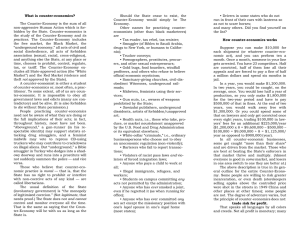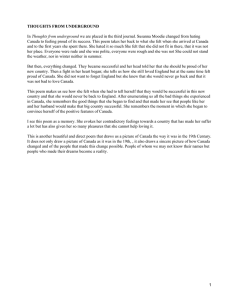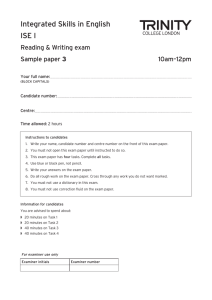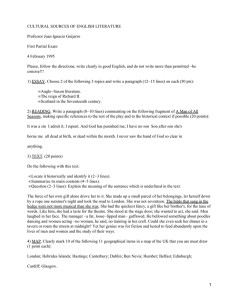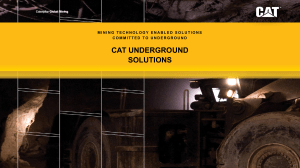ISE I Sample paper 2 - Trinity College London
Anuncio
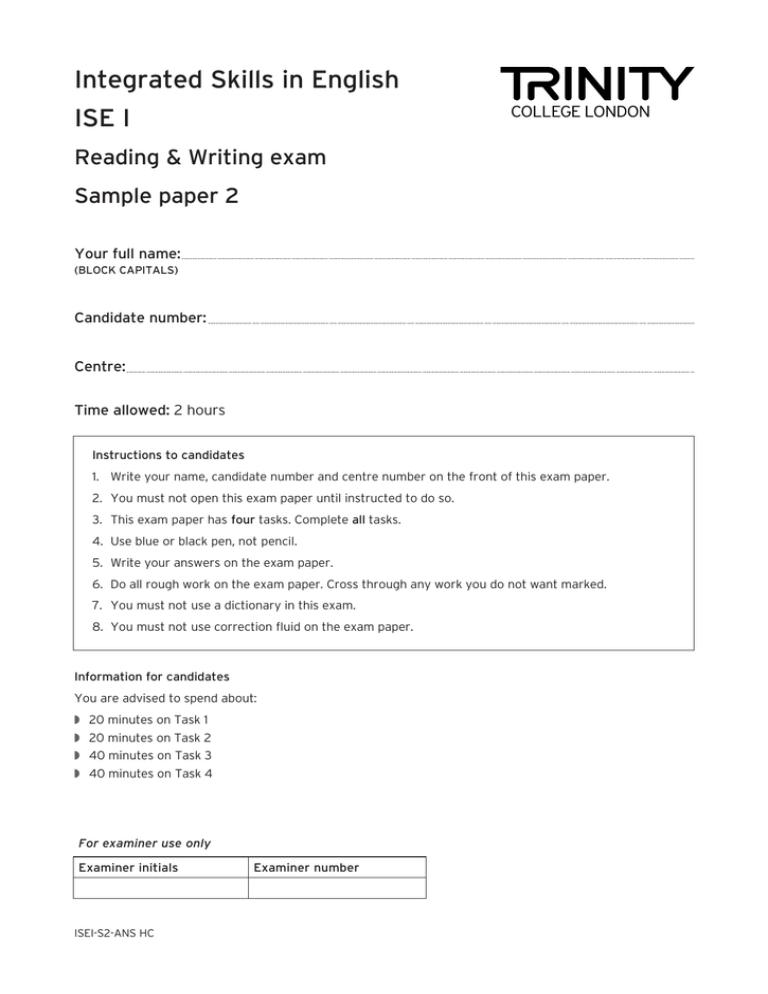
Integrated Skills in English ISE I Reading & Writing exam Sample paper 2 Your full name: (BLOCK CAPITALS) Candidate number: Centre: Time allowed: 2 hours Instructions to candidates 1. Write your name, candidate number and centre number on the front of this exam paper. 2. You must not open this exam paper until instructed to do so. 3. This exam paper has four tasks. Complete all tasks. 4. Use blue or black pen, not pencil. 5. Write your answers on the exam paper. 6. Do all rough work on the exam paper. Cross through any work you do not want marked. 7. You must not use a dictionary in this exam. 8. You must not use correction fluid on the exam paper. Information for candidates You are advised to spend about: w 20 minutes on Task 1 w 20 minutes on Task 2 w 40 minutes on Task 3 w 40 minutes on Task 4 For examiner use only Examiner initials ISEI-S2-ANS HC Examiner number ISE I Integrated Skills in English I Time allowed: 2 hours This exam paper has four tasks. Complete all tasks. Task 1 — Long reading Read the following text about transport and answer the 15 questions on page 3. The first underground train Paragraph 1 Today there are underground train systems in over 40 countries. For example, you can take underground trains in Paris, New York and Tokyo. Modern underground systems use electric trains, and they are clean, safe and quiet. They usually arrive on time. There are no traffic jams. Most people are happy to use them. But the first underground train systems were quite different from the modern systems we see in big cities all around the world. Paragraph 2 The first underground trains ran in London in 1863. It was a very busy city and the streets were full of traffic. There were too many people, horse carriages, houses and buildings. There just wasn’t enough space above ground, and so people decided to put the trains underground. But unlike today, there were no electric trains in 1863 and all of the trains used steam engines — which made power from fire and water. Paragraph 3 In 1863, all of the trains used steam engines. Because these engines were powered by very hot water and fire, the tunnels were smoky, steamy, and noisy. People wanted some fresh air, but it was difficult to get it into the tunnels and stations. The tunnels were dark, too. The train cars and stations were made of wood, and lighted with gas. Sometimes there were accidents because of fires. Paragraph 4 Before the London Underground opened, people were very scared about the idea of going into underground tunnels. Many were afraid of the tunnels full of the smoke, the steam and the noise from the train engines. And indeed, travelling in the tunnels of the first underground system was a very noisy, dark, and smelly experience. But on the first day, the new London Underground carried 40,000 passengers. It was very quick, and the trains ran every 10 minutes. The people of London fell in love with their new train system. Paragraph 5 The London Underground had three classes of travel. First class was the most expensive and most comfortable. Second class was less expensive but still comfortable. Third class was the opposite of first class. When the London Underground opened, the third class tickets were the most popular. About 70% of the tickets sold were these cheap tickets for ordinary working people. Nowadays the prices have gone up, but the underground experience around the world is definitely cleaner and quieter! page 2 This exam paper has four tasks. Complete all tasks. ISE I Questions 1–5 The text on page 2 has five paragraphs (1–5). Choose the best title for each paragraph from A–F below and write the letter (A–F) on the lines below. There is one title you don’t need. 1. Paragraph 1 3. Paragraph 3 A Why the first underground train system was built B Tickets for the first underground system C People’s feelings about the first underground train system 4. Paragraph 4 D What the first underground system was like 2. Paragraph 2 E Railroads of the first underground system 5. Paragraph 5 F Modern underground train systems Questions 6–10 Choose the five statements from A–H below that are TRUE according to the information given in the text on page 2. Write the letters of the TRUE statements on the lines below (in any order). 6. 7. 8. 9. 10. A The stations and tunnels of the first underground system were smoky. B The first underground trains were late because of traffic jams. C There were three types of tickets for the first underground trains. D The first underground trains were built in Paris. E At first, people were worried about using the first underground trains. F The first underground train stations were made of wood. G Ordinary working people could not buy first class underground tickets. H The ticket prices today are still cheap for ordinary working people. Questions 11–15 Complete sentences 11–15 with a word, phrase or number from the text (maximum three words). Write the word, phrase or number on the lines below. trains. 11. In 1863, there weren’t any . 12. Steam engines used the power of . 13. Thousands of people used the London Underground on lights. 14. The old London Underground used 15. When the London Underground opened, most of the tickets sold were the . Turn over page page 3 ISE I Task 2 — Multi-text reading In this section there are three short texts for you to read and some questions for you to answer. Questions 16–20 Read questions 16–20 first and then read texts A, B, C and D below the questions. As you read each text, decide which text each question refers to. Choose one letter — A, B, C or D — and write it on the lines below. You can use any letter more than once. Which text 16.makes negative comments about the activities of local people and businesses? 17. reports a good news story about recent improvements to a river environment? 18.shares lots of practical ideas from different people about how to improve a local river? 19.calls for more political action and public education to protect a nearby river? 20.shows some changing patterns in the state of health of a particular river? Text A From: Eva Sent: 11 November 2014 19:37 To: [email protected] Subject: River Mêle Dear Editor The River Mêle causes health problems in the city, so we need to take action. Although the other local factories have stopped putting waste into the river, the paper factory is still breaking pollution laws, and should have to pay big fines. The mud of the riverbed needs to be taken away because it’s polluted with chemicals. Politicians are scared to say this, because it brings jobs to the city, but it is obvious that the paper company should pay. Also, people need to be educated: drinks bottles and plastic bags wouldn’t be such a problem if people reused or recycled them. Yours Eva Strauss Text B The River Tollen: Yearly report on the results of pollution 20 Waste from factories up 6.4% page 4 Oxygen (O2) levels in water down 3.5% Fish numbers down 3% Water birds down 2.4% Rubbish up 14% Chemicals from farms in riverbed up 5.5% This exam paper has four tasks. Complete all tasks. ISE I Text C The city is getting millions from the government to improve the River Lamm! How should it spend the money? Paul: I’ve always thought that the river would be great for kayaking so how about a watersports centre for people to do things like that? Marcus: It would be great to see people using the river for transport, like in the old days. Divna: Fear stops a lot of people going to the river! Even a little lighting along the riverbank would help people to feel safe. Alex: I’d like to see one of the old factories become a museum of the city’s industrial history. Inge: @Alex And some quality waterside cafés would attract visitors too. Simone: @Divna I agree – security cameras too, to protect people from criminals! Alex: @Inge Hopefully they’ll close that fast food place – that would mean less litter on the ground! Text D GREEN CITY — NEWS In the yearly Big Clean-up on the River Vico, 50 students picked up rubbish from the banks of the river, and several local companies got together to clear the river of fridges, bikes and other large items! We criticise supermarkets on this site sometimes, but they let staff have time off work to plant trees along the river, so well done to them! Science student Martina Keller took part in the Clean-up. She told us, ‘In the five years since this started, you can see the change — the river’s clear again now, not black, like it used to be! Plants are growing on the bottom of the river again, and we’ll see a lot more fish and birds, I’m sure.’ Questions 21–25 Choose the five statements from A–H below that are TRUE according to the information given in the texts above. Write the letters of the TRUE statements on the lines below (in any order). 21. 22. 23. 24. 25. A The Big Clean-up and tree-planting projects are improving the River Vico. B Waste paper and cardboard are causing serious pollution in the River Mêle. C Some people don’t go to the River Lamm because they are worried about safety. D The water quality on the River Tollen has continued to improve. E The Big Clean-up Project on the River Vico takes place once a year. F On the River Tollen rubbish has increased more than farm or factory pollution. G Money needs to be raised for improvements to the River Lamm. H The paper factory near the River Mêle is an important local employer. Turn over page page 5 ISE I Questions 26–30 The summary notes below contain information from the texts on pages 4 and 5. Find a word or phrase (maximum three words) from texts A–D to complete the missing information in gaps 26–30. Write your answers on the lines below. Summary notes The main causes of river pollution: • industrial pollution, eg waste from factories • agricultural pollution, eg (26.) • dumping large domestic items, eg fridges, bikes • household rubbish, eg (27.) Ideas for improving the riverside environment: • developing sporting facilities, eg (28.) • encouraging transportation, eg pleasure boats, canal boats • creating public eating places, eg (29.) • designing visitor attractions , eg museum of industrial history • making the riverside a safer place, eg (30.) • getting local community involved, eg Big Clean-up, plant trees page 6 This exam paper has four tasks. Complete all tasks. ISE I Task 3 — Reading into writing Write a short essay for your teacher (100–130 words) about the problem of river pollution in a city or town. Use the information you read in Task 2 (pages 4–6) to: w describe some problems from river pollution in a town or city w explain some steps that can be taken to help clean up a polluted river and w suggest how you think people can be encouraged to look after their local river better. You should plan your essay before you start writing. Think about what you want to say and make some notes to help you in this box: Planning notes (No marks are given for these planning notes) Now write your essay of 100–130 words on the lines below. Try to use your own words as far as possible — don’t just copy sentences from the reading texts. Turn over page page 7 page 8 ISE I This exam paper has four tasks. Complete all tasks. ISE I When you have finished your essay, spend 2–3 minutes reading through what you have written. Make sure you have covered all three bullet points. Remember to check how you made use of the reading texts, as well as the language and organisation of your writing. Turn over page page 9 ISE I Task 4 — Extended writing Write an article (100–130 words) for a website for students about different ways to study. You should: w give examples of ways you prefer to study and w explain why these ways work for you. You should plan your article before you start writing. Think about what you want to say and make some notes to help you in this box: Planning notes (No marks are given for these planning notes) Now write your article of 100–130 words on the lines below. page 10 This exam paper has four tasks. Complete all tasks. ISE I Turn over page page 11 ISE I When you have finished your article, spend 2–3 minutes reading through what you have written. Make sure you have covered both bullet points and remember to check the language and organisation of your writing. End of exam Copyright © 2015 Trinity College London ISE I Sample paper 2 Answers Task 1 — Long reading 1. F 2. A 3. D 4. C 5. B 6–10 can appear in any order 6. A 7. C 8. E 9. F 10. G 11. electric 12. fire and water 13. the first day 14. gas 15. third class tickets / cheap tickets Task 2 — Multi-text reading 16. A 17. D 18. C 19. A 20. B 21–25 can appear in any order 21. A 22. C 23. E 24. F 25. H 26. chemicals from farms 27. drinks bottles OR plastic bags 28. kayaking OR a watersports centre 29. (quality) waterside cafes 30. lighting OR security cameras
